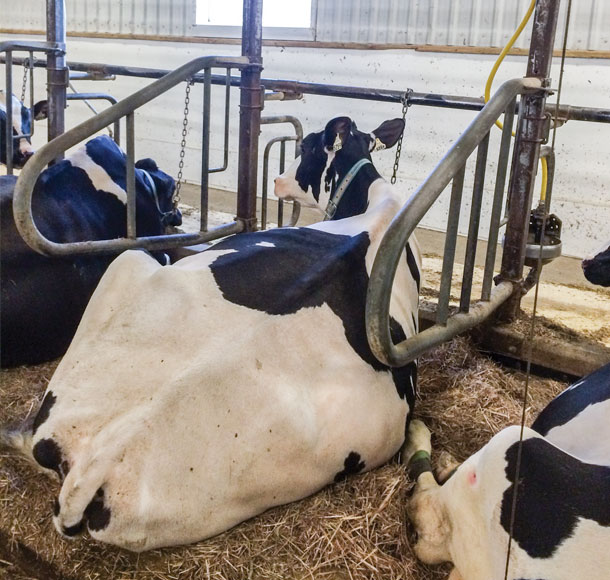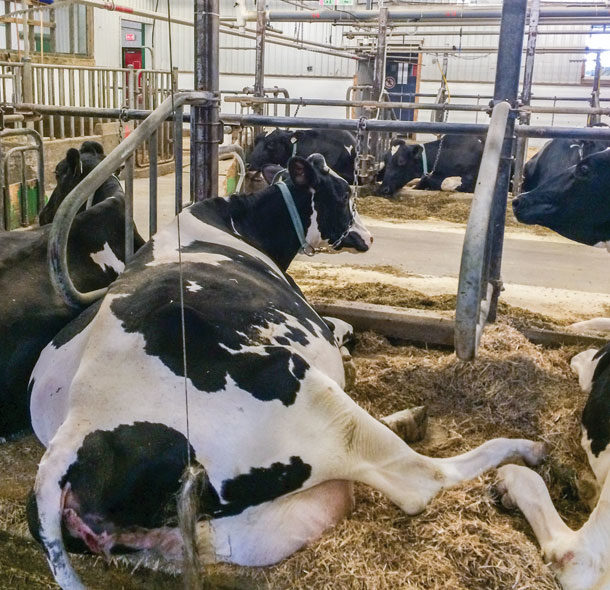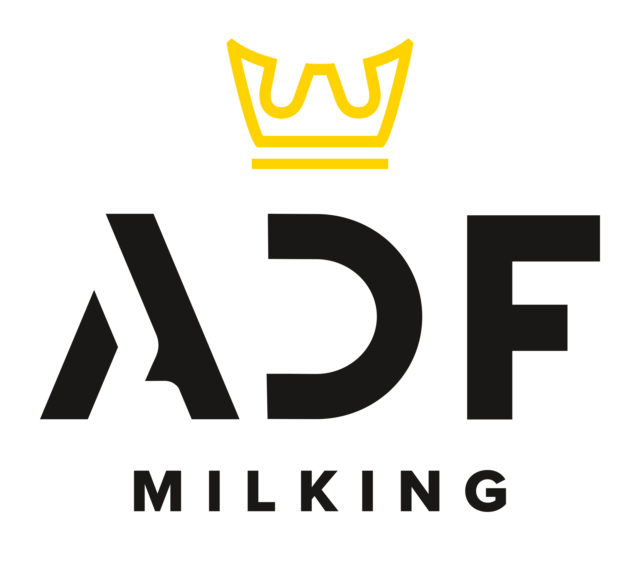The research team led by Renée Bergeron, University of Guelph, and collaborators Trevor DeVries at University of Guelph; Doris Pellerin, Anne Vanasse and Anick Raby at Université Laval; and Elsa Vasseur, Philippe Séguin and Tania Wolfe at McGill University found switchgrass is a promising alternative to wheat straw as bedding material for dairy cows.
They discovered cows preferred switchgrass over the straw, and there were no negative effects on cow comfort, cleanliness and teat-end contamination. Switchgrass may also be a more economically advantageous choice for some dairy farmers.
In their study, they assessed cow preference, lying behaviour, stall and cow cleanliness, and potential bacterial contamination of teat ends. They also analyzed the economic impact of the use of switchgrass and the best harvesting practices for performance and quality as bedding.
In the first experiment, nine cows were housed individually in pens with three stalls with different lying surfaces.
They were submitted to a preference test for three types of bedding: deep-bedded chopped switchgrass, “switchgrass-lime” mattress (mixture of chopped switchgrass, water and carbonic magnesium lime – farms using organic bedding commonly add lime to reduce bacterial growth) and wheat straw on a rubber mat (control).
The cows had been previously exposed to stalls with sawdust-covered mattresses. Lying times were recorded and the cows were filmed.
In the second experiment, 24 cows in freestall housing were offered the same three bedding treatments. Researchers tested the effects of the three types of bedding on lying behaviour, cow cleanliness and teat-end bacterial contamination.
Stall usage was recorded, and samples were taken of teat ends and tested for bacteria (coliforms, Klebsiella spp. and Streptococcus spp.).
The researchers found the cows preferred the switchgrass bedding compared to the other two bedding types when given equal access and choice.
The results also showed the switchgrass and switchgrass-lime deep-bedded options were equivalent in terms of lying behaviour and cow cleanliness, but the higher moisture content and teat-end coliform counts on the switchgrass-lime surface made it a less favourable option. A longer-term study would be required to confirm the latter finding.
When wheat straw and switchgrass were compared for lying time, cleanliness, injury, somatic cell count and teat-end bacteria, they were equivalent in terms of comfort and cleanliness.

Harvest and use of switchgrass
The research team also investigated the economic impact of using switchgrass as an alternative bedding and identified harvesting practices to optimize its performance and conservation.
Switchgrass was grown, harvested and dried on two sites in Quebec – at Université Laval and McGill University. The field experiments showed yields are much higher when switchgrass is harvested in the fall compared to the spring.
However, the spring harvest resulted in lower moisture content. Harvesting before or after the first frost in the fall does not seem to affect winter survival or regrowth in the spring, and drying efficiency is higher when switchgrass is harvested before frost compared to after the fall frost. However, the final moisture content of switchgrass remains higher before frost than after frost.
To assess the economic impact of using switchgrass as bedding, 10 Quebec dairy farms in five regions of the province were surveyed. For most, it was an economically advantageous choice.
Farmers reported yields and persistence are advantages, and other benefits cited included smaller storage space required. ![]()
PHOTOS: Cows were evaluated to see if there was a bedding preference for straw or switchgrass. Photos provided by Dr. Renée Bergeron, University of Guelph.
Visit Canadian Dairy Research for a summary of the dairy-related organic science cluster projects.
Dairy Research for a Healthy World
Dairy Farmers of Canada (DFC) supports investments in research in the areas of human nutrition and health and sustainable dairy production.
In so doing, it aims to increase the value, the innovative character and the quality of dairy products, present milk as a durable source of nutrients, improve knowledge on the nutritional value and health benefits of dairy products, and encourage productivity, sustainability and profitability on farms.
Through the Canadian Dairy Research Council, DFC oversees research investments as well as the development and implementation of its research programs and knowledge translation and transfer activities in dairy production and human nutrition and health. Visit Canadian Dairy Research for more information.









